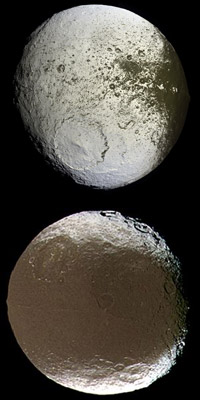These are two pictures of Iapetus. Some parts of the moon's surface are bright white. Other areas are very dark. The Cassini spacecraft took these pictures.
Click on image for full size
Images courtesy of NASA/JPL/Space Science Institute.
Iapetus
Iapetus was discovered by G. Cassini in 1672. Iapetus is the 2nd farthest moon from Saturn, with a standoff distance of 3,561,300 km. Iapetus is one of the
icy moons, similar to the
Galilean satellites. Iapetus is about as wide as California is long, 1440 km, or 960 miles, which makes it about the same size as Rhea, a moderately large icy moon.
Iapetus is very much like Rhea, Enceladus, Dione, and Tethys except that it looks completely different. In fact, Iapetus is unique, and does not look like any other object in the solar system in that its surface appears to be half dark and half bright.
You might also be interested in:
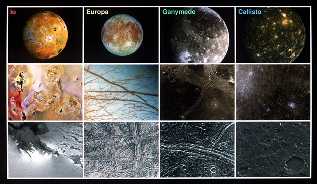
The Galilean satellites are the 4 major moons of Jupiter, Io, Europa, Ganymede, and Callisto. In this picture, Io, and Io’s surface, are shown on the left-most end, then Europa, and its surface, then Ganymede,
...more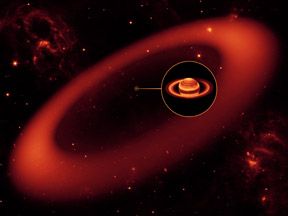
The Phoebe Ring is one of the rings around the planet Saturn. The Phoebe Ring is much bigger than Saturn's other rings. It is about 100 times larger than the main ring system. Saturn's moon Phoebe orbits
...more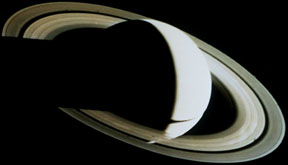
Many people like Saturn's rings. Although Saturn isn't the only planet with rings, it is the only planet famous for them. Almost every image or drawing of the planet has the rings included. But few people
...more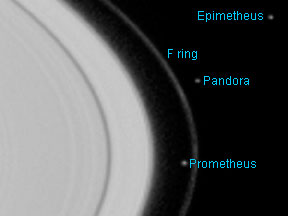
Prometheus is a small moon of Saturn. It was discovered by S. Collins and others in 1980 from photos taken by the Voyager 1 spacecraft. This moon's name comes from Greek mythology. Prometheus was a Titan
...more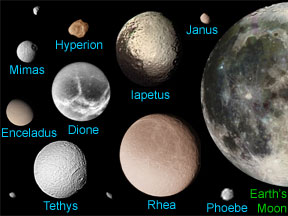
Saturn has // Call the moon count function defined in the document head print_moon_count('saturn'); moons. Many of those are tiny chunks of rock or ice only a few kilometers (miles) across. One of Saturn's
...more
Saturn has // Call the moon count function defined in the document head print_moon_count('saturn'); moons. Many of those are tiny chunks of rock or ice only a few kilometers (miles) across. One of Saturn's
...more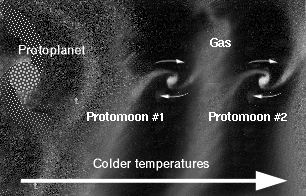
Titan is similar to the other icy moons, but Titan is the only icy moon to have a big atmosphere. It is natural to ask how is this possible? The nebula was colder near Saturn, than near Jupiter. The nebula
...more


